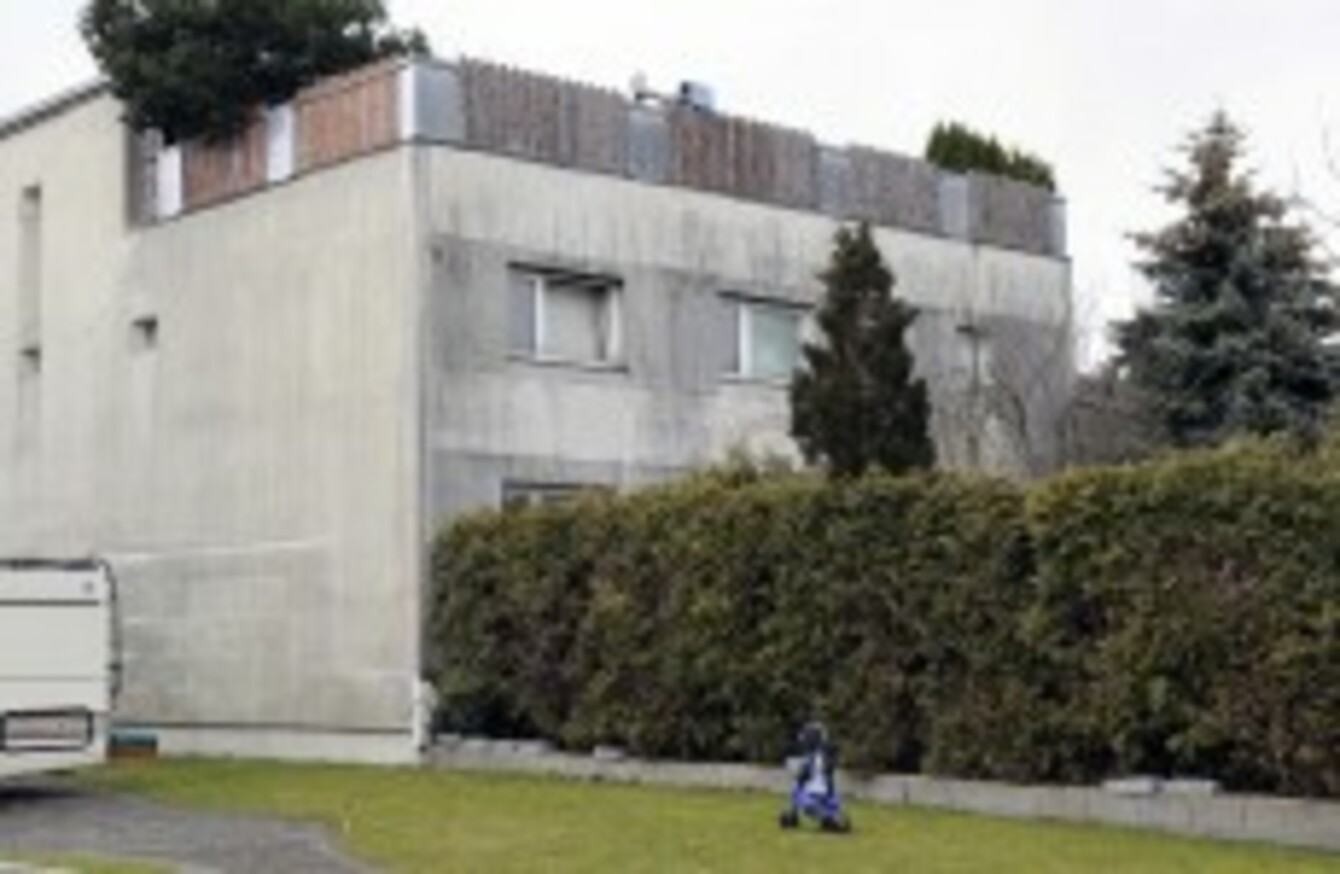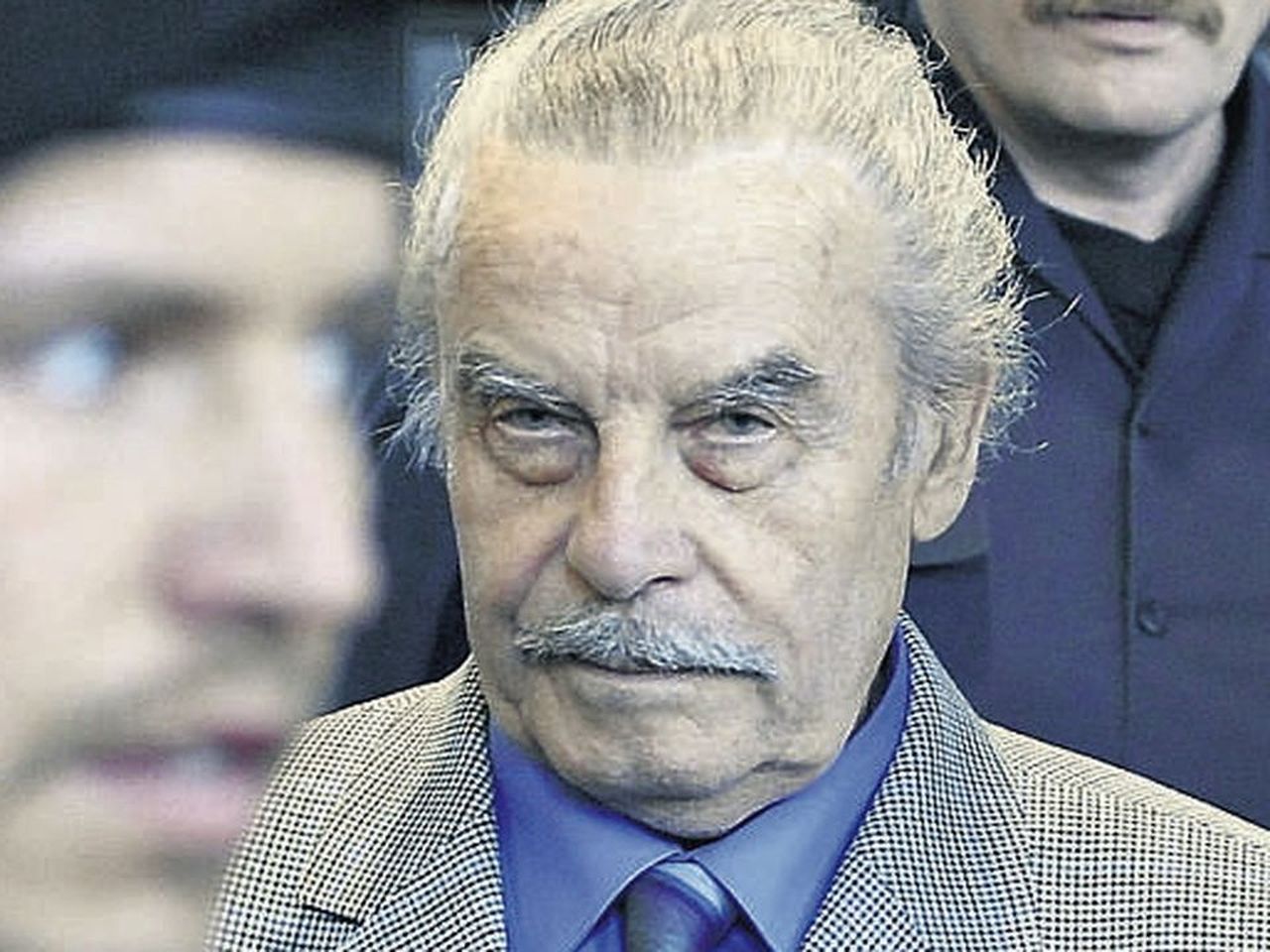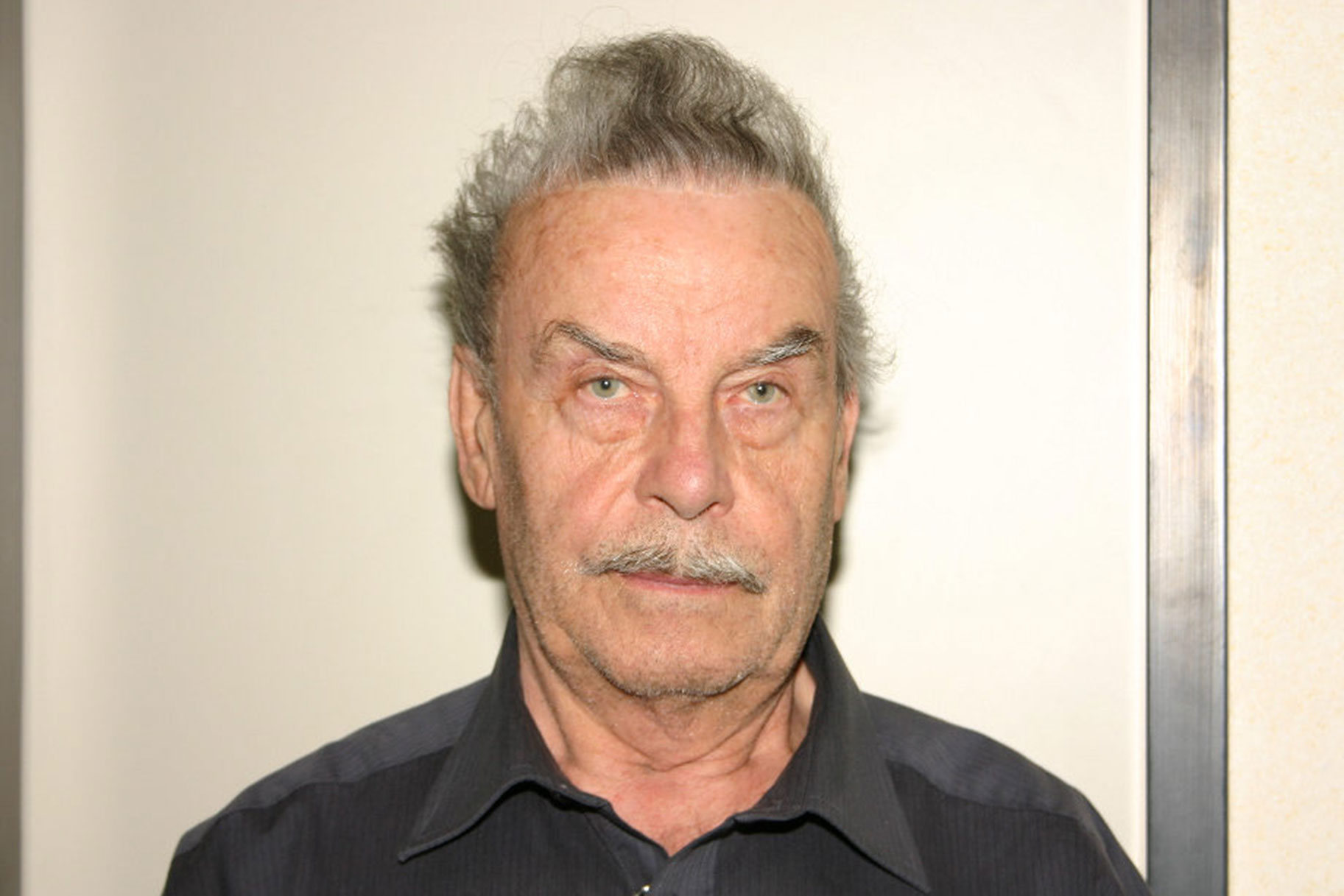The Josef Fritzl case, a chilling saga that emerged in 2008, sent shockwaves across the globe, exposing a horrifying tale of captivity and abuse hidden beneath a seemingly ordinary family home. At its core lay the unimaginable reality of a secret dungeon, a space meticulously constructed and maintained by Josef Fritzl, where he held his own daughter, Elisabeth Fritzl, captive for an astonishing 24 years. This article delves into the grim details surrounding the Josef Fritzl basement, exploring its construction, the unspeakable events that transpired within its walls, and the lasting impact of this notorious case on the world.
The story of the Josef Fritzl basement is not merely a crime report; it is a profound examination of human depravity, resilience, and the ultimate triumph of truth. It forces us to confront the darkest corners of human nature and the hidden horrors that can exist behind closed doors. Understanding the intricacies of this case, from the meticulous planning of the basement to the eventual liberation of Elisabeth and her children, provides crucial insights into the psychological manipulation and control exerted by perpetrators like Fritzl, and the desperate struggle for survival faced by their victims.
Table of Contents
- The Unthinkable Unveiled: The Josef Fritzl Case Emerges
- A Father's Deception: The Genesis of the Josef Fritzl Basement
- Life in the Abyss: Daily Existence in the Josef Fritzl Basement
- The Unraveling: How the Josef Fritzl Basement Came to Light
- Josef Fritzl: The Man Behind the Monstrosity
- The Aftermath: Justice and Recovery
- The Enduring Impact and Lessons Learned
- Elisabeth Fritzl Today: Beyond the Basement
The Unthinkable Unveiled: The Josef Fritzl Case Emerges
The world first learned of the horrific events surrounding the Josef Fritzl basement in April 2008. It was then that Elisabeth Fritzl, born on April 6, 1966, informed investigators in Amstetten, Lower Austria, that she had been held captive for 24 years by her father, Josef Fritzl. Her reappearance after being missing for over two decades immediately made headlines globally, shattering the facade of a quiet Austrian village and revealing a nightmare of unimaginable proportions. The sheer length of her imprisonment and the nature of the abuse were almost beyond comprehension, forcing society to grapple with the reality of such extreme human cruelty.
- Atoya Burleson
- Young Sheldon Season
- Ginny And Georgia Season 3
- Rochelle Deanna Karidis
- Fast Car Luke Combs
The initial reports painted a picture of a man who had meticulously orchestrated a secret life, one that involved a hidden dungeon beneath his family home. This revelation was not just about a missing person found; it was about a hidden world of torment and control that had existed undetected for nearly a quarter of a century. The details that slowly emerged about the Josef Fritzl basement and the lives lived within its confines were so shocking that they quickly became a defining moment in criminal history, prompting widespread discussions about family secrets, psychological manipulation, and the failures of social systems to detect such prolonged abuse.
A Father's Deception: The Genesis of the Josef Fritzl Basement
The story of the Josef Fritzl basement is not just about the captivity, but about the calculated, years-long preparation that preceded it. Josef Fritzl, a seemingly ordinary electrical engineer, began constructing his secret dungeon in the 1970s. This was not an impulsive act, but a deliberate and sustained effort to create an inescapable prison beneath his own family’s home in Amstetten, central Austria.
Building the Unseen Prison
The "house of horrors cellar," as it would later be known, was a vast complex hidden beneath the main house. Fritzl used his expertise and cunning to build a windowless, soundproofed area, complete with multiple rooms, a small kitchen, and a bathroom. This secret cellar was designed to be completely self-contained and undetectable from the outside world. He installed a heavily reinforced, electronically controlled door, accessible only through a hidden passage, ensuring that once closed, it would be virtually impossible to open from within or discover from without. The construction of the Josef Fritzl basement was a testament to his meticulous and perverse planning, creating a truly isolated world.
- Emmy Raver Lampman Movies And Tv Shows
- Ethan Hawke
- Air Signs Astrology
- Alec Baldwin Net Worth
- Jonathan Owens Stats
This elaborate construction highlights the chilling premeditation involved. For years, while his family lived above, Josef Fritzl was busy creating the very space that would become his daughter's prison. The sheer scale and complexity of the hidden rooms underscore the depth of his depravity and his absolute determination to execute his horrific plan. The secrecy surrounding the building process was paramount, with Fritzl often working late at night, ensuring no one suspected the true purpose of his subterranean project.
The Lure and the Lock: Elisabeth's Abduction
The moment of Elisabeth's abduction arrived on a hot day in August 1984. Elisabeth Fritzl was just 18 years old when her father, Josef Fritzl, lured her into the basement. He asked her to help him install a cellar door, a seemingly innocent request that masked a sinister intent. Once she was inside the secluded area, he knocked her out with ether and tied her to a bed. From that moment, Elisabeth's life as a free individual ceased, and her 24-year nightmare in the Josef Fritzl basement began.
Her disappearance was initially reported by Josef Fritzl himself, who claimed she had run away to join a religious cult, even forging a letter from her to support this fabricated story. This deception allowed him to maintain control over the narrative and deflect any suspicion from himself or his home. The meticulous planning of the basement, combined with this elaborate cover-up, ensured that Elisabeth's cries for help would go unheard and her existence remain unknown to the outside world for decades.
Life in the Abyss: Daily Existence in the Josef Fritzl Basement
For 24 years, the Josef Fritzl basement was Elisabeth's entire world. It was a windowless, confined space where she endured unimaginable physical and psychological torment. Her daily existence was dictated by her captor, a life devoid of sunlight, fresh air, and any contact with the outside world, save for the presence of her tormentor.
The Birth of Children in Captivity
One of the most horrifying aspects of the case was the fact that Elisabeth gave birth to seven children fathered by Josef Fritzl during her captivity. The first of these children, Kerstin Fritzl, was born on August 30, 1988, four years after Elisabeth's imprisonment began. These children, born into a world of darkness and confinement, knew no other reality than the Josef Fritzl basement. Three of the children—Kerstin, Stefan, and Felix—remained imprisoned with Elisabeth in the cellar, never seeing the light of day until their rescue.
Three other children were brought upstairs by Josef Fritzl and raised by him and his wife, Rosemarie, who was told they were abandoned babies found on their doorstep. One child tragically died shortly after birth in the basement, and Fritzl disposed of the body by burning it. The births in the basement underscore the extreme isolation and the horrific circumstances Elisabeth was forced to endure, becoming a mother in the most dire and inhumane conditions imaginable.
The Struggle for Survival and Sanity
Life in the Josef Fritzl basement was a constant struggle for survival. Elisabeth and her children lived in cramped conditions, entirely dependent on Josef Fritzl for food, water, and basic necessities. They were subjected to his absolute control and cruelty. Despite the unimaginable trauma, Elisabeth displayed remarkable resilience, doing her best to care for her children and maintain some semblance of normalcy within their confined world. She taught them to read and write, using the limited resources available, providing them with a semblance of education and hope.
The psychological toll of such prolonged captivity, isolation, and abuse is immense. Yet, Elisabeth's ability to protect and nurture her children in such an environment speaks volumes about her strength. The conditions inside the Josef Fritzl basement were appalling, a testament to the perpetrator's indifference to the well-being of his victims. The image of "Mirror man Jeremy in the basement" is a haunting reminder of the psychological horror endured within those walls, a stark reflection of a life stolen and distorted.
The Unraveling: How the Josef Fritzl Basement Came to Light
The horrifying secret of the Josef Fritzl basement finally came to light in April 2008, triggered by a medical emergency. Elisabeth and Josef Fritzl’s eldest child, Kerstin, who had spent her entire life in the basement, became extremely sick with agonizing cramps. Her condition was so severe that Josef Fritzl was forced to bring her out of the cellar and take her to a hospital. This act, born out of necessity, inadvertently set in motion the events that would expose his decades-long crime.
At the hospital, doctors grew suspicious of Kerstin's unusual medical history and the strange circumstances surrounding her arrival. They alerted the authorities, who then questioned Josef Fritzl. Under pressure, and with mounting evidence and inconsistencies in his story, Josef Fritzl eventually admitted to police that he had locked up his daughter for 24 years and that all the children were his. This confession, after decades of deception, finally brought the nightmare of the Josef Fritzl basement to an end, shocking the world with its sheer brutality and the incredible length of the captivity.
Josef Fritzl: The Man Behind the Monstrosity
Josef Fritzl, born on April 9, 1935, was the architect of the "house of horrors cellar" and the perpetrator of one of the most infamous crimes in modern history. His public persona as a respectable, if somewhat authoritarian, family man completely masked the monstrous reality of his secret life. He was a man who meticulously planned and executed the systematic abuse and imprisonment of his own daughter for over two decades.
Josef Fritzl: Personal Data and Case Overview
| Attribute | Detail |
|---|---|
| Full Name | Josef Fritzl |
| Date of Birth | April 9, 1935 |
| Crime Emerged | April 2008 |
| Victim | Elisabeth Fritzl (daughter) |
| Duration of Captivity | 24 years (1984-2008) |
| Children Fathered | 7 (with Elisabeth Fritzl) |
| Charges | Incest, rape, coercion, false imprisonment, enslavement, murder by neglect (of infant son) |
| Sentence | Life imprisonment (March 2009) |
| Current Age (as of 2023/2024) | 88-89 years old |
Fritzl's trial in 2009 was closely watched by the international media. He pleaded guilty to incest, rape, coercion, false imprisonment, and enslavement. Initially, he denied the murder charge related to the infant who died in the basement, but later changed his plea to guilty after viewing Elisabeth's testimony. He was sentenced to life in prison. Now 88 years old, Josef Fritzl remains incarcerated, a figure of enduring notoriety and a symbol of extreme criminal depravity. Reports indicate that even from prison, the rapist Josef Fritzl is already making demands about his living arrangements, reflecting a continued sense of entitlement despite his heinous crimes.
The Aftermath: Justice and Recovery
The immediate aftermath of the Josef Fritzl basement discovery was a whirlwind of legal proceedings, media frenzy, and an overwhelming need to provide care for the victims. Elisabeth and her children were immediately taken to a secure psychiatric clinic, where they began the arduous process of physical and psychological recovery. They had to adjust to a world they barely knew, a world with sunlight, open spaces, and freedom. The children, especially those who had never seen the outside, faced immense challenges in adapting to normal life, requiring extensive therapy and support.
The legal system moved swiftly to bring Josef Fritzl to justice. His confession and subsequent guilty plea ensured a relatively quick trial. The life sentence he received was a clear message from the Austrian courts regarding the severity of his crimes. The case also prompted a re-evaluation of how authorities handle missing persons reports and how communities can be more vigilant in detecting hidden abuse. The property where the Josef Fritzl basement was located was eventually purchased in 2016 to provide a new start for the local community, and the basement dungeon itself was filled with concrete, permanently sealing off the site of so much suffering.
The Enduring Impact and Lessons Learned
The Josef Fritzl basement case left an indelible mark on global consciousness. It served as a stark reminder that even in seemingly safe and ordinary communities, unimaginable horrors can lurk beneath the surface. The story highlighted the importance of listening to victims, no matter how unbelievable their claims may seem, and the need for greater vigilance from authorities and the public.
The nightmare that Elisabeth Fritzl lived through for 24 years served as the inspiration for the film ‘Girl in the Basement,’ among other media portrayals. While these dramatizations aim to raise awareness, the real-life trauma is far more profound. The case spurred discussions on psychological manipulation, the dynamics of abusive relationships within families, and the long-term effects of trauma on survivors. It underscored the critical need for robust child protection services, mental health support for victims of prolonged abuse, and community awareness campaigns to recognize the signs of domestic violence and captivity. The sheer audacity of Josef Fritzl's actions, and the extent of his control over his family, continue to be studied by criminologists and psychologists worldwide.
Elisabeth Fritzl Today: Beyond the Basement
After decades of living in the Josef Fritzl basement, Elisabeth Fritzl and her children have largely remained out of the public eye, seeking privacy to heal and rebuild their lives. Information about where Elisabeth Fritzl is now is understandably scarce, a testament to the efforts made to protect her and her children's anonymity and ensure their recovery away from the intense media scrutiny. They have been provided with new identities and a secure environment, allowing them to forge a new future free from the shadow of their past.
Their journey to recovery is undoubtedly long and complex, but reports suggest they are living in a protected location in Austria, receiving ongoing support and therapy. The decision to fill the Josef Fritzl basement with concrete was a symbolic act, signifying the end of that dark chapter and preventing any morbid tourism or further exploitation of the site. The focus has rightly shifted from the perpetrator and the horrific prison to the survivors, their resilience, and their right to a peaceful and dignified life after enduring such unimaginable suffering. Their story, while tragic, is also one of immense courage and the enduring human spirit to overcome adversity.
The Josef Fritzl basement stands as a chilling monument to human cruelty, but also to the remarkable strength of those who survived it. The case continues to serve as a powerful cautionary tale, urging society to remain vigilant against the hidden horrors that can exist and to support the victims of such profound abuse in their journey towards healing and reclaiming their lives.
- Sydney Sweeney Husband
- Libra And Scorpio Compatibility
- Simone Biles Wedding
- Peso Pluma Real Name
- Fred Figglehorn


